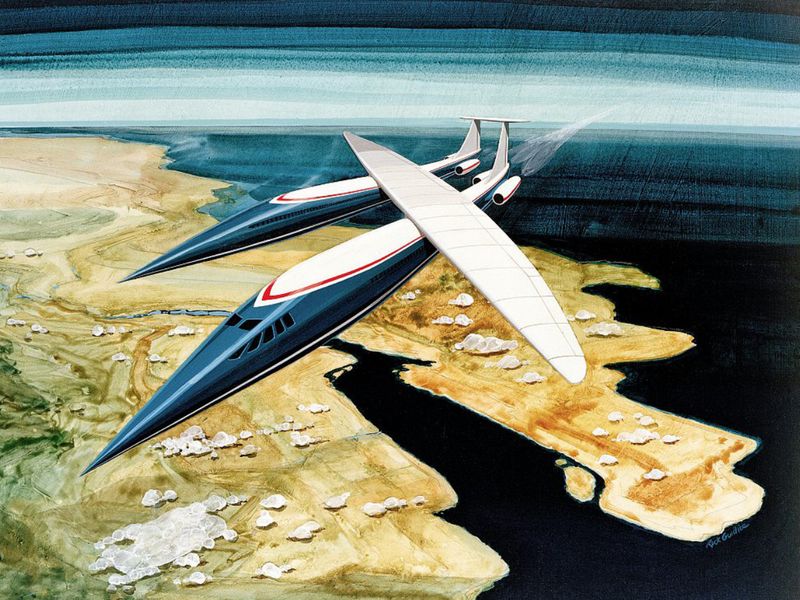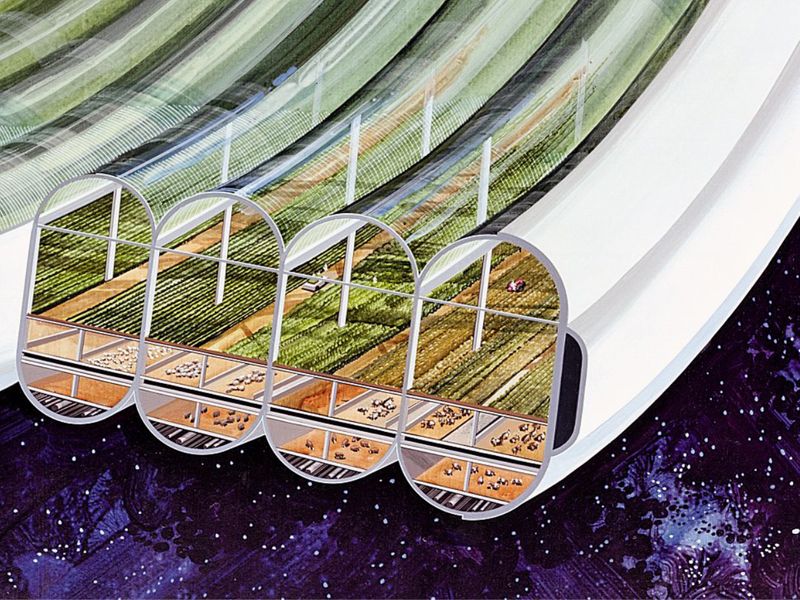
1975, Mountain View, right in the middle of the Silicon Valley, one year before the creation of Apple and a decade before the birth of Mark Zuckerberg, inside NASA’s Ames Research Center space scientists are already spending their days imagining what the future will bring. Gerard O'Neill, a NASA researcher with a Star Trek bowl cut, begins holding seminars with his students in order to build space colonies. A kind of road map giving direction to the United States after the end of the Apollo programme, which had been devoted to moon landings. Now is the time to reflect on how best to inhabit the cosmos.

Electromagnetic catapult
Gerard O'Neill, physicist, author of several theories on gravity, has invented two count-er-rotating cylinders, each with a 3-kilometre radius and almost 30-kilometres long. Inside them, there are ‘Earth’ spaces where future colonists cultivate their fields, and huge alternating ‘window’ spaces to let the sunlight in. At the time, Gerard O'Neill and his students had already thought of everything, in particular the potentially stratospheric cost of building such structures. The colonies were envisaged as micro-societies, self-sufficient in terms of energy, a form of early days ecology. Constructed with raw materials collected from the surface of the moon and transported by electromagnetic catapult – the same de-vice which is used to launch fighter planes off an aircraft carrier – these imaginary worlds would operate with solar panels and would be funded by the construction of solar power plants in orbit.
Once the ideas were there, Gerard O'Neill went in search of artists to draw them. Without the option of using digital models, 1975 was still the golden era of hand-painted, plastic models. Gerard O'Neill called up a Californian illustrator, Rick Guidice, who had already done drawings for architecture firms while in high school.

An inspiration for the movies
At 25 he was recruited by NASA and still remembers the large metre-long canvases he had to lug around in his small car, driving between his studio in Los Gatos and the Mountain View headquarters. “I loved the time I spent with NASA scientists”, explains Rick Guidice, who still lives in Los Gatos, California. “It was like having an entire space programme all to myself. The more excited the engineers got about their inventions, the more I was driven to paint.” That famous summer in 1975, Gerard O’Neill gave Rick Guidice little sketches of cylinders. The painter transformed them into a huge work of art and produced representations which would be seen around the world. A dozen images of colonies that have inspired science fiction writers and directors to this day: at the end of the blockbuster Interstellar, the film’s hero Cooper, played by Matthew McConaughey, wakes up in a spacecraft directly inspired by the models that O’Neill imagined and Rick Guidice painted. “Since the birth of the Internet and Facebook, I’ve had calls and messages from space enthusiasts who tell me how my illustrations informed their ideas about outer space. Some of them now work for NASA.”
Rick Guidice has given up illustrating and now devotes his energy to running his own architecture firm in California. Weary of space, he now hones his art at an outdoor painting club, inspired by landscapes… here on earth.



